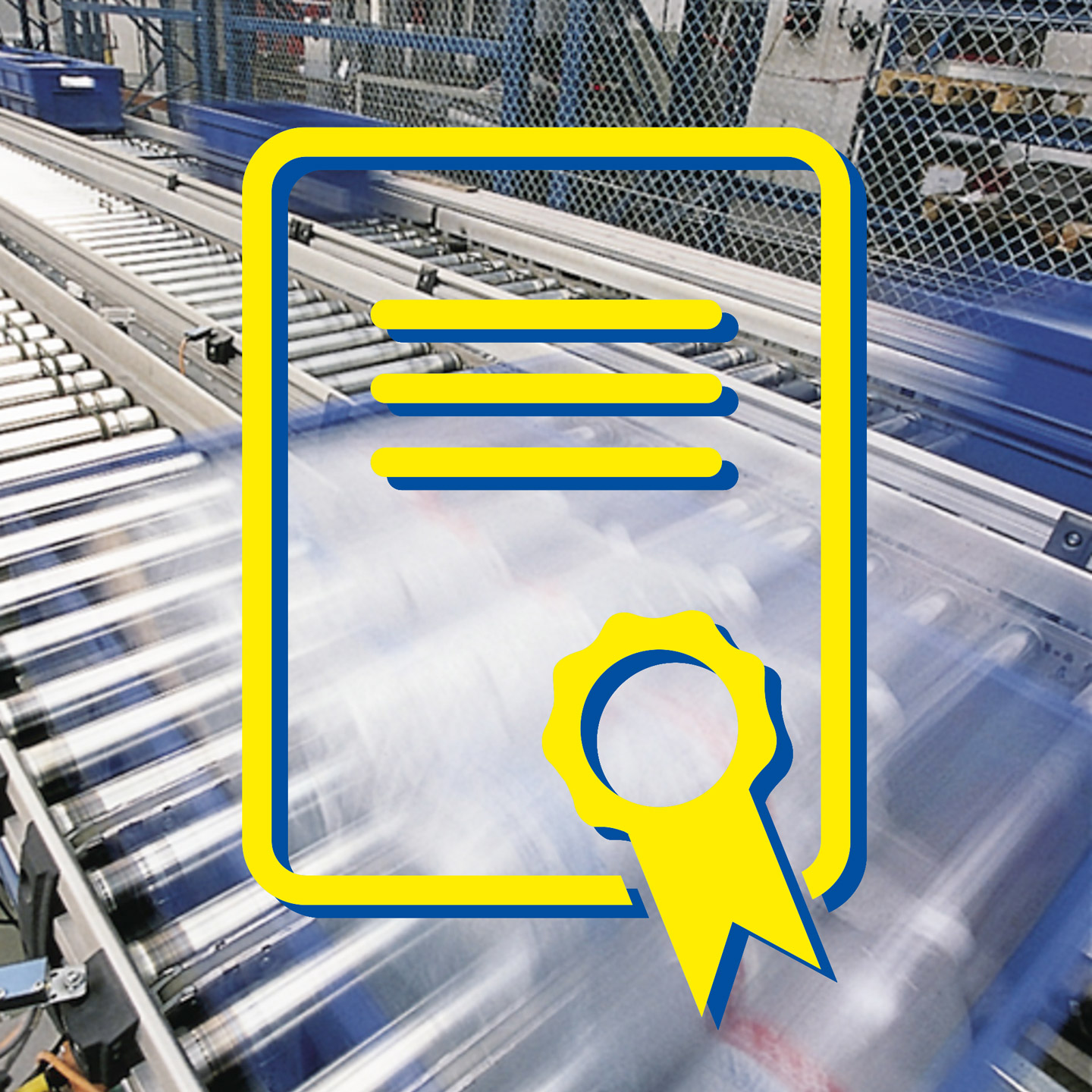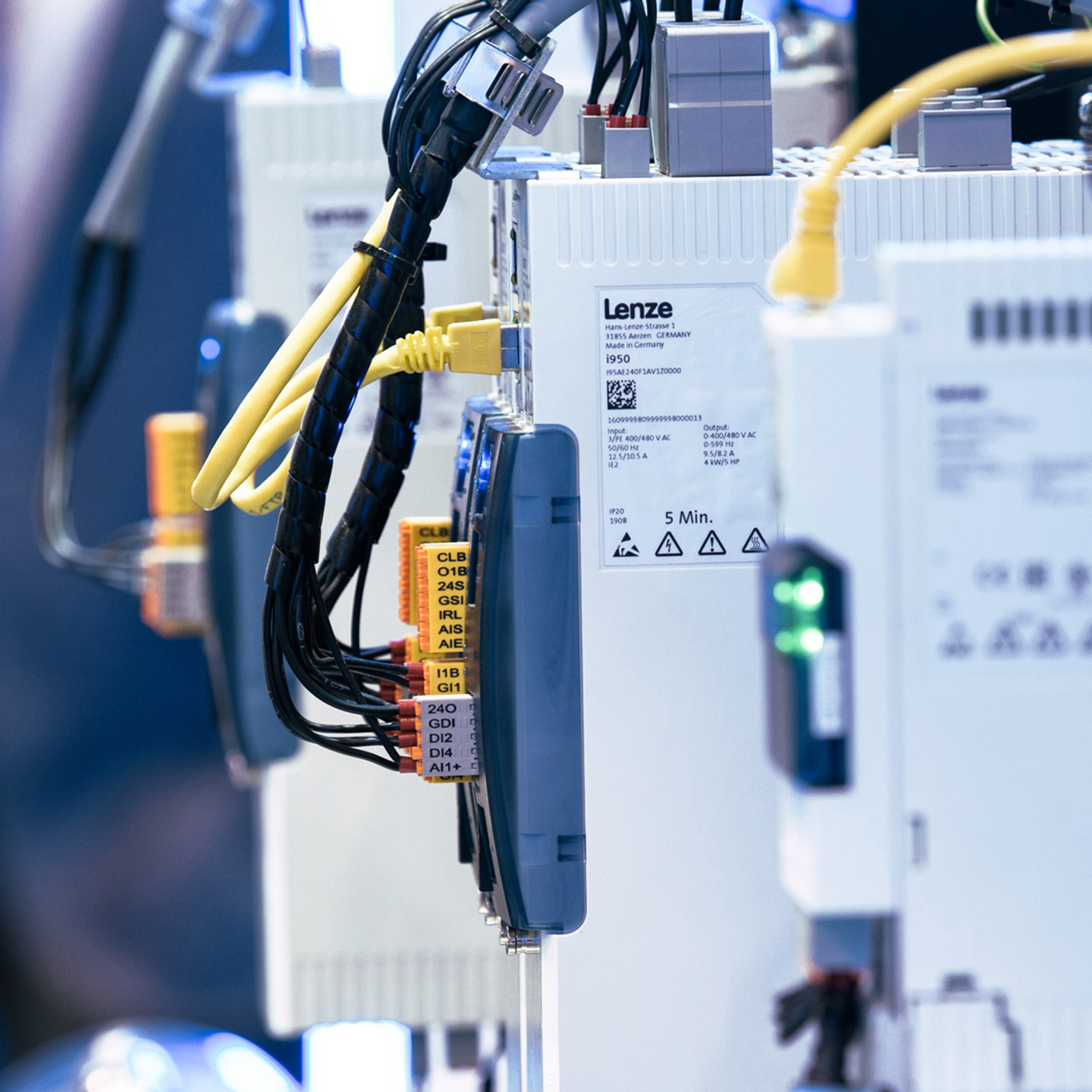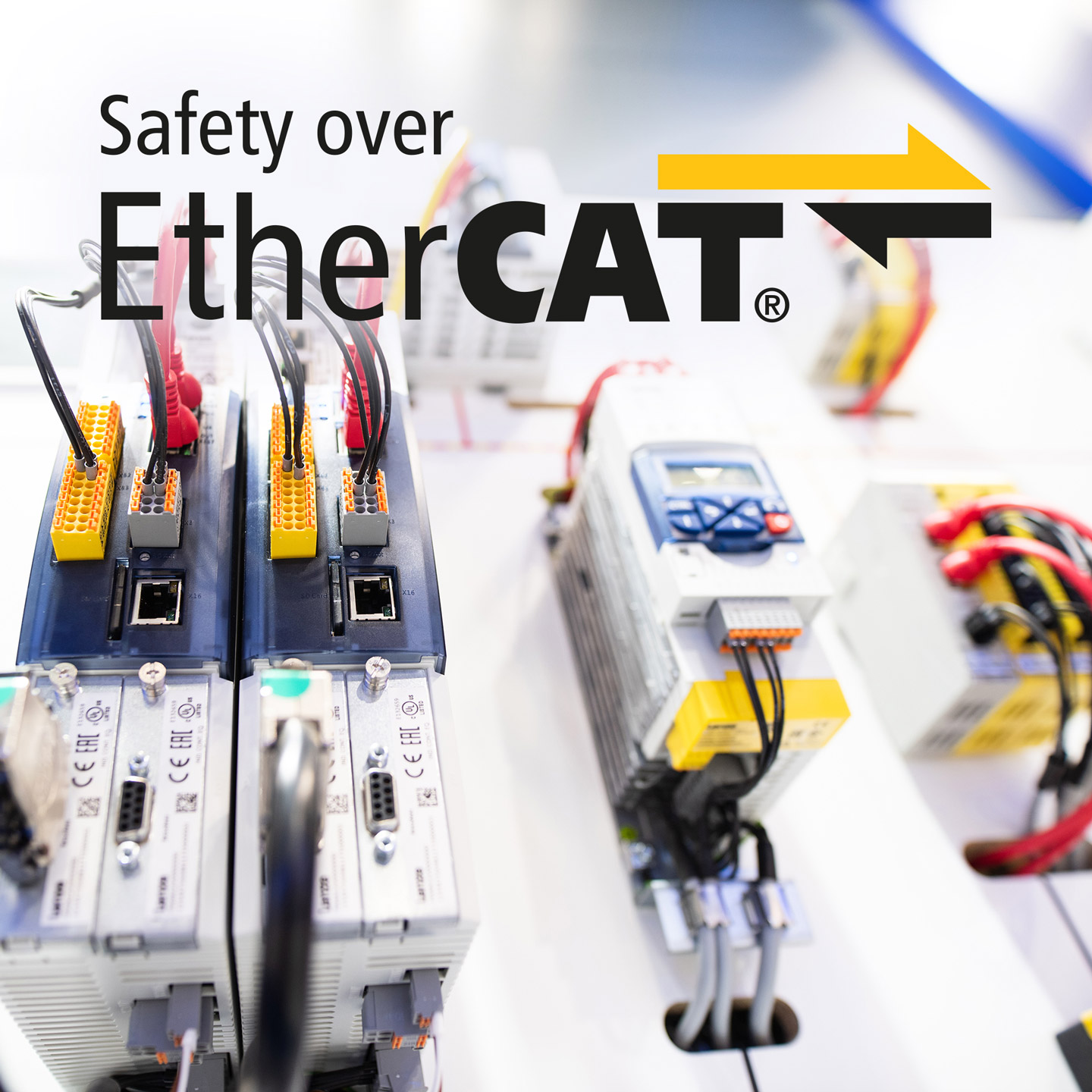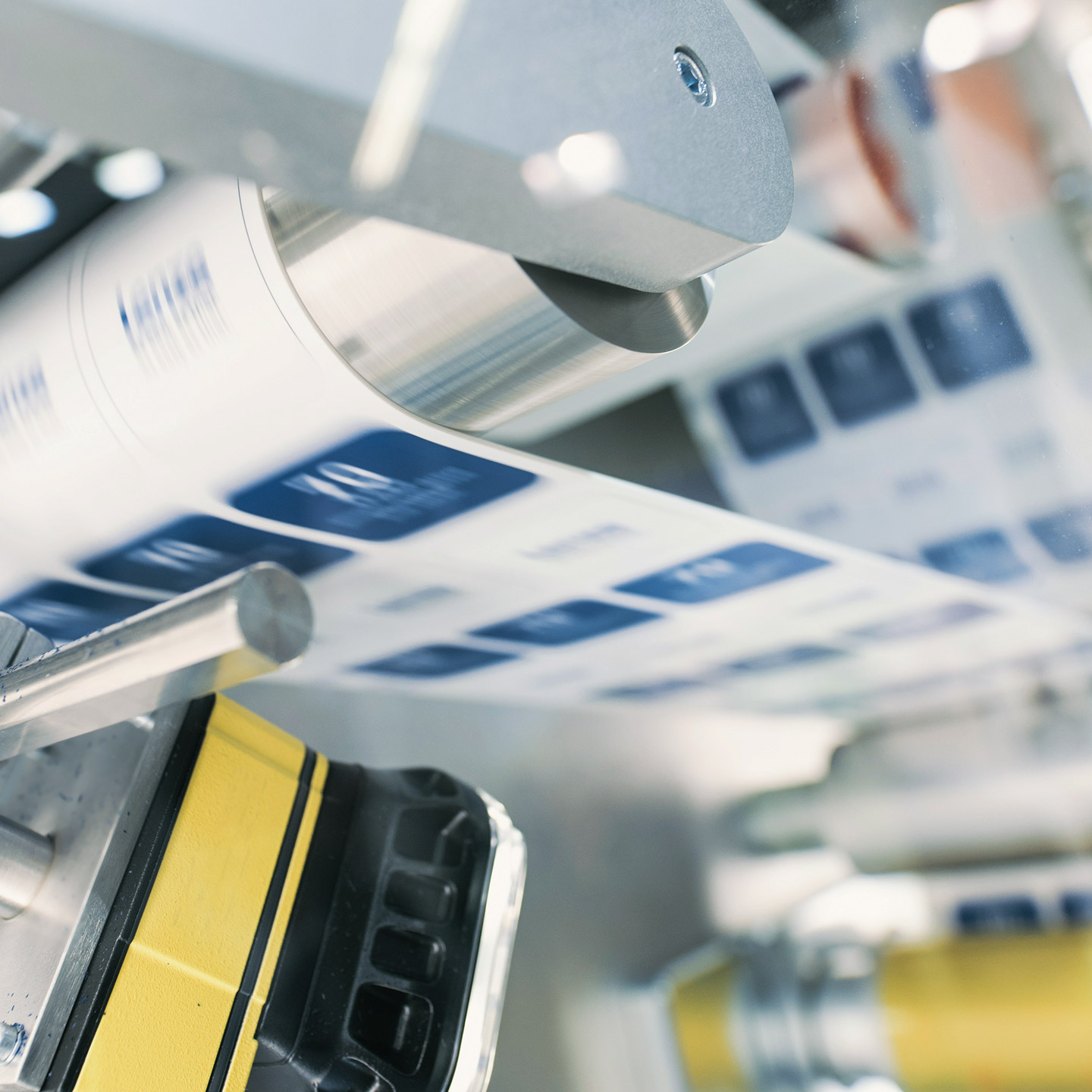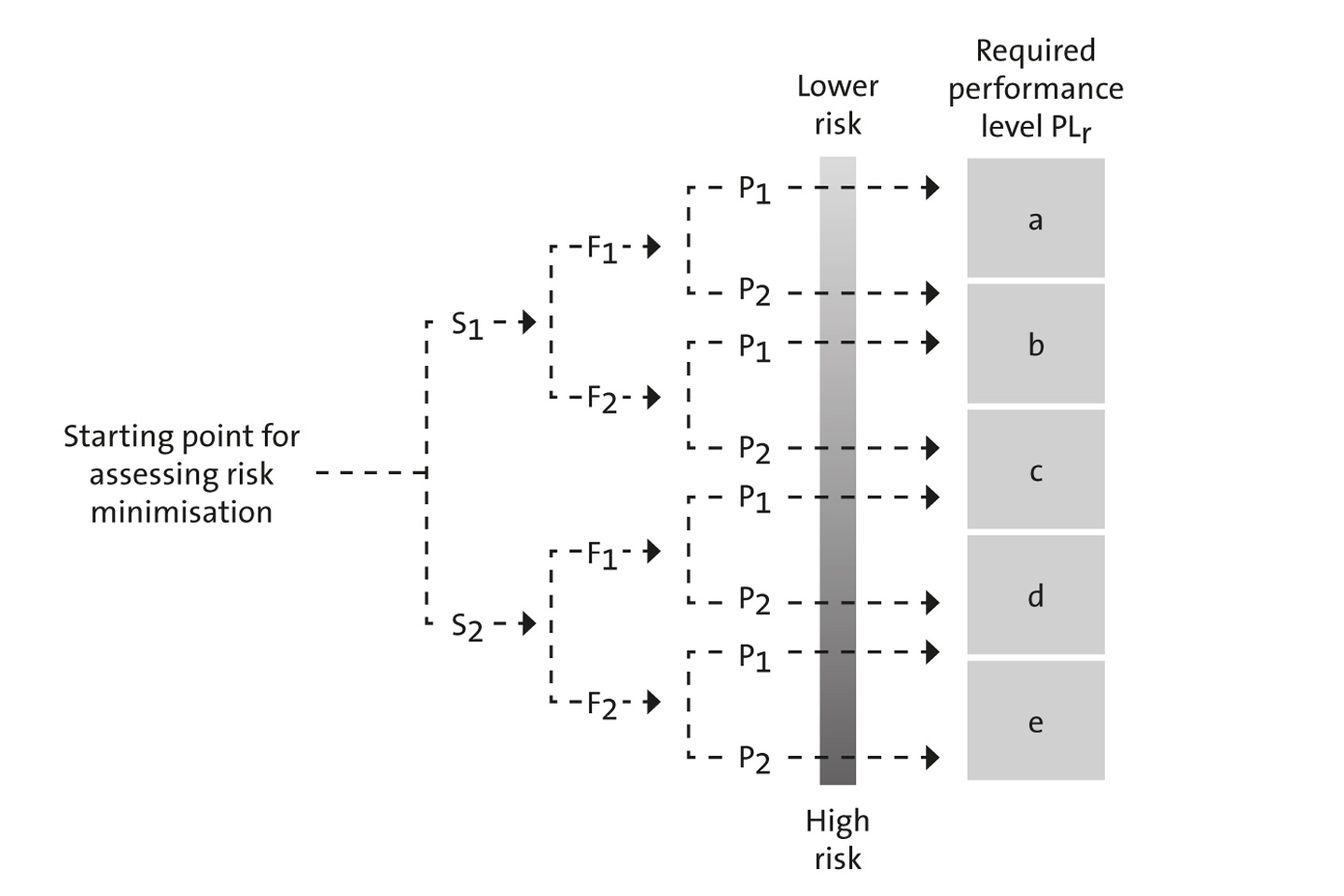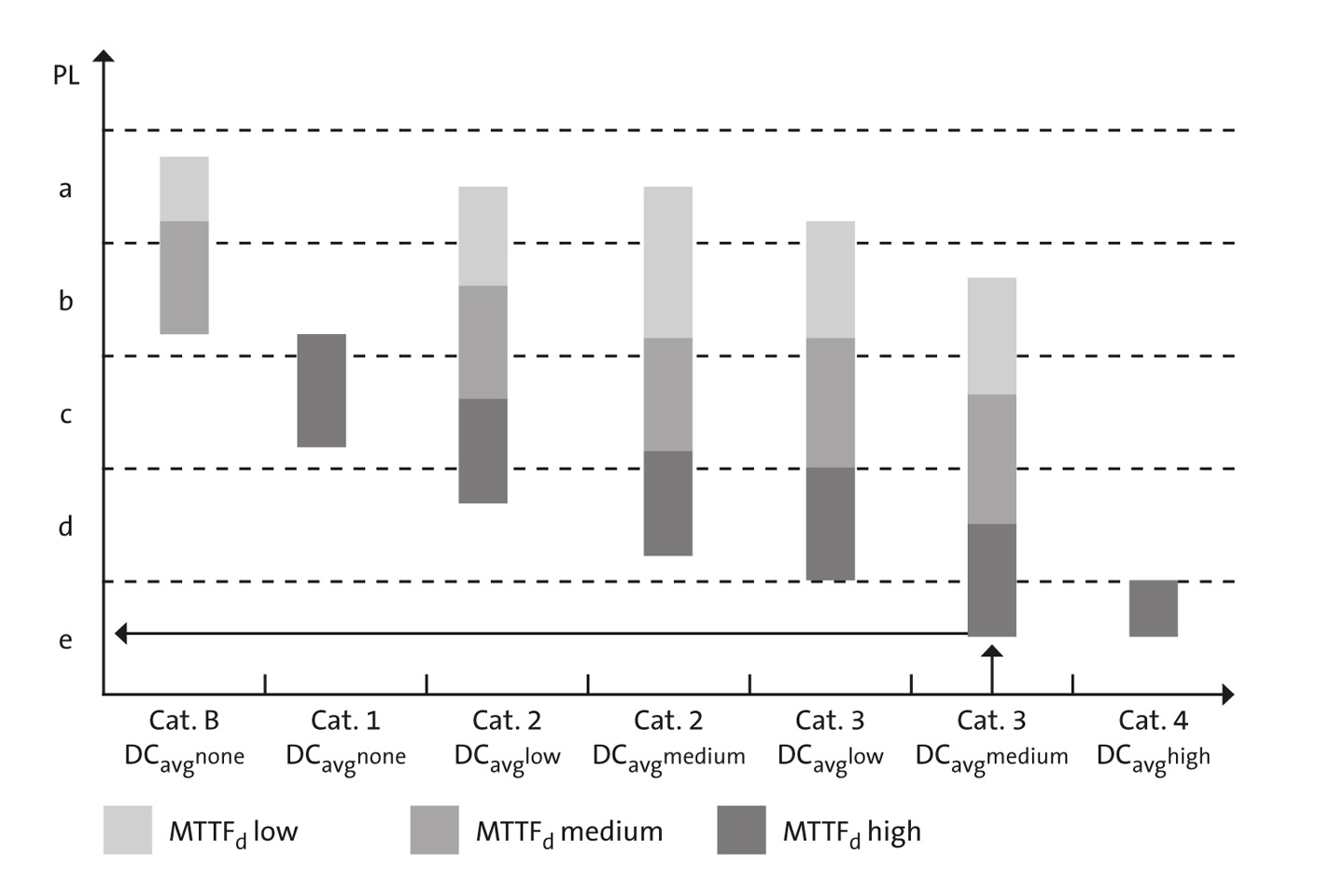At Lenze, we address the issue of safety technology with Centralized/Decentralized Safety. Dangers for operating and maintenance personnel also emanate from the moving parts of the machines. It is essential to protect employees from these risks at all times - the most effective way to do this is to intervene at the point in the machine where the hazardous movement occurs - directly in the inverter.
Certified
Since the safety functions integrated in the drive already have EC type approval, acceptance of the entire machine (e.g. by TÜV or the employers' liability insurance association) is simplified. The safety modules are certified according to EN ISO 13849-1, EN IEC 61508 and EN IEC 62061 and achieve the highest performance level PL e.
Direct connection
For the integration of Centralized/Decentralized Safety into the safety chain of your machine, safely executed inputs are available for the safety sensor technology. The connection to a higher-level PLC, which processes both standard and safety logic, is made via bus systems that can simultaneously transmit safe and unsafe data on a physical bus system - e.g. PROFIsafe or FSoE.
Simplified planning
We support you in implementing your safety requirements with the safety technology that can be integrated as an option. All functions are developed according to IEC 61508, SIL 3 and meet the requirements of EN ISO 13849-1 PL e as well as EN IEC 62061 SIL 3. This simplifies the acceptance of your entire machine.
Safety topology
Functional safety in the inverter means that safety topologies can be implemented with very little wiring effort. The PLC Designer engineering tool, which can be used throughout, allows the safety aspects to be integrated very conveniently into the machine's stand-alone application. No system change is necessary, since standards (PLCopen) are used. The programming, setup and operation of the system can be created consistently with the tool. Operation and diagnosis is done directly or via a bus system.
Safety topologies EtherCAT
A very high-quality solution is a safety topology via EtherCAT with its extension FSoE (Functional Safety over EtherCAT). This solution is a very modern and high-performance bus system. By using EtherCAT, the inverters can be controlled quite easily and further peripheral components can be connected.
Third party components
In many applications, it is necessary to integrate not only the drives into the safety topology, but also other components, so-called "third party components". When using EtherCAT/FSoE, Lenze has consistently adhered to the associated standards. This means that integration is possible without any problems. These components can be integrated without system breaks and contribute to the implementation of the machine's safety functions.
Functional Safety
Machine safety regulations determine that the OEM must guarantee the safety of a person, machine and the environment throughout the entire life cycle (and all operating modes). If the management does not follow suit, it is liable for the consequences - possibly even with private assets.
The central legal acts describing the requirements for machine manufacturers are the Machinery Directive and its successor, the Machinery Regulation. The white papers provide an overview of the legal requirements with a focus on the Machinery Directive and Machinery Regulation, tips for implementation, and the consequences of non-compliance. The paper also deal with the interaction of safety and security. While the two topics used to be often seen as opposites, Safety and Security have now become close "sisters" which both need to be considered and executed conjointly. The paper also look at opportunities that arise from Functional Safety. Three concrete examples show how Functional Safety pays off directly. For those who want to look into the matter more deeply the paper provides a list of interesting literature, which -along with norms and guidelines- include particularly important interpretation papers.
Five steps to a safe machine
The Machinery Directive comprises the following elements:
Carrying out a risk assessment: This enables you to identify applicable safety and health protection requirements.
- Design and construction of the machine that takes into account the results of the risk assessment.
- Following the risk assessment, you will know what measures you need to implement to reduce the risks.
If you cannot implement these measures in the design phase, then it will be necessary to integrate them into the control technology and set them down in writing in the specifications for the safety functions.
When using a control system, the Performance Level (PL) determines the requirements that the measures will need to meet in order to reduce risk. Following the implementation of safety functions, the real achieved PL will be checked and must be at least the same or greater than that worked out in theory beforehand.

